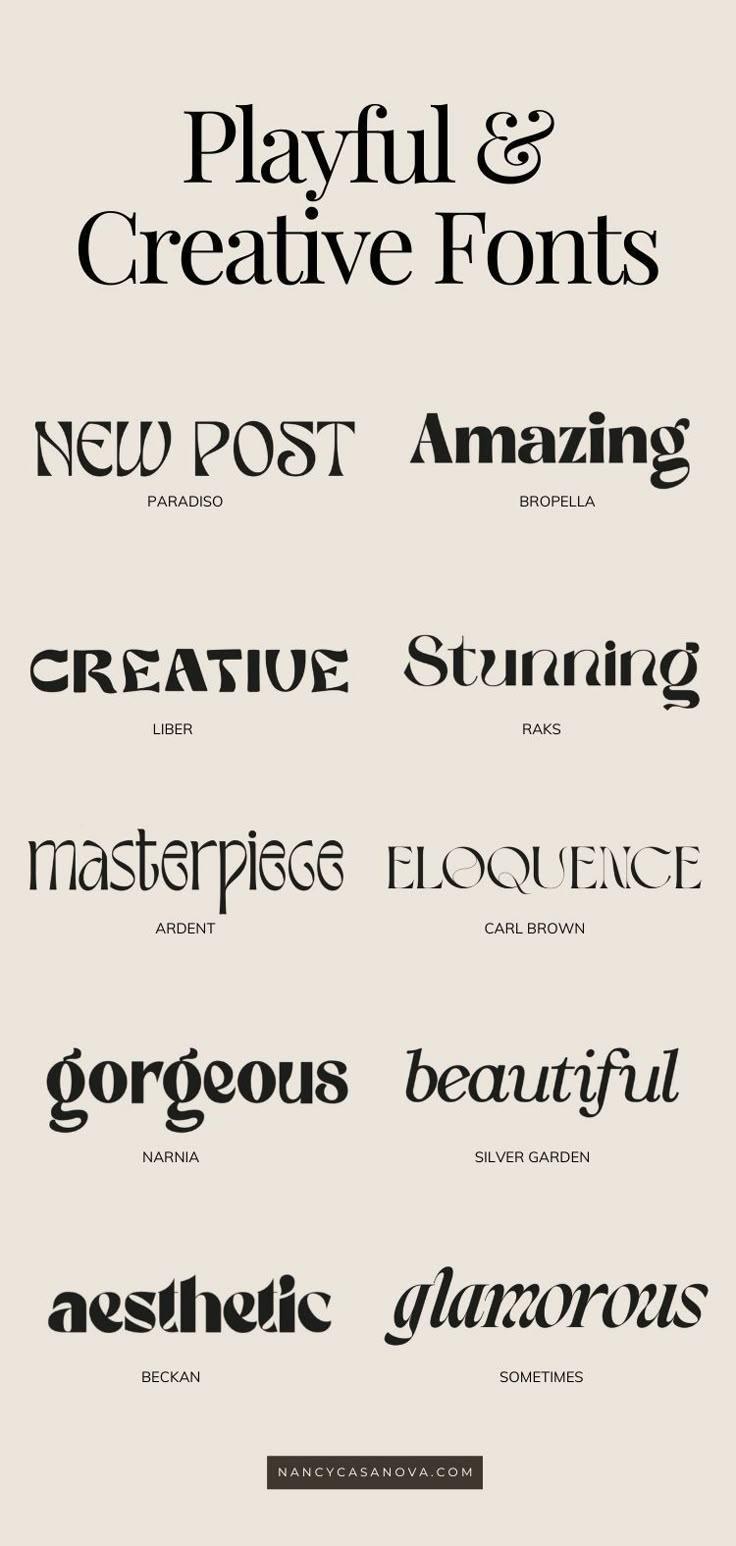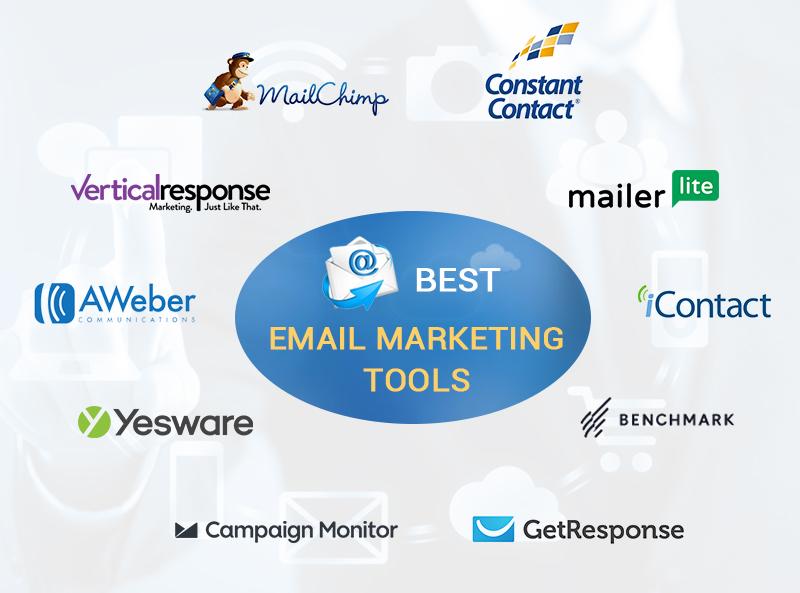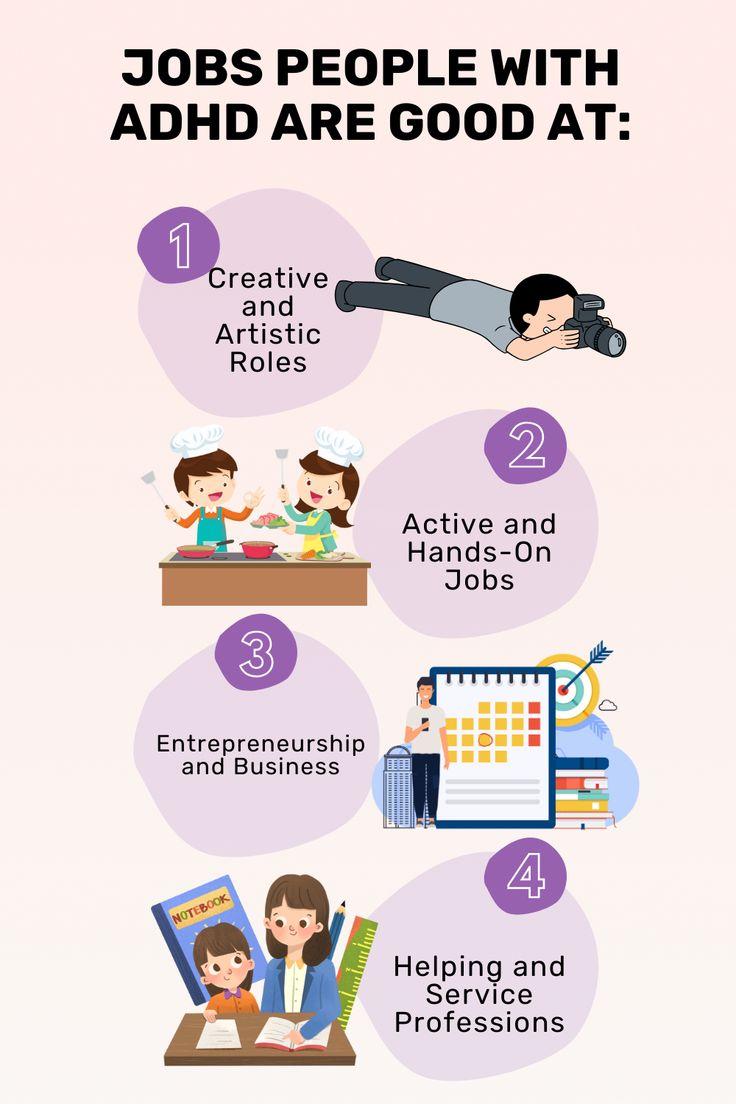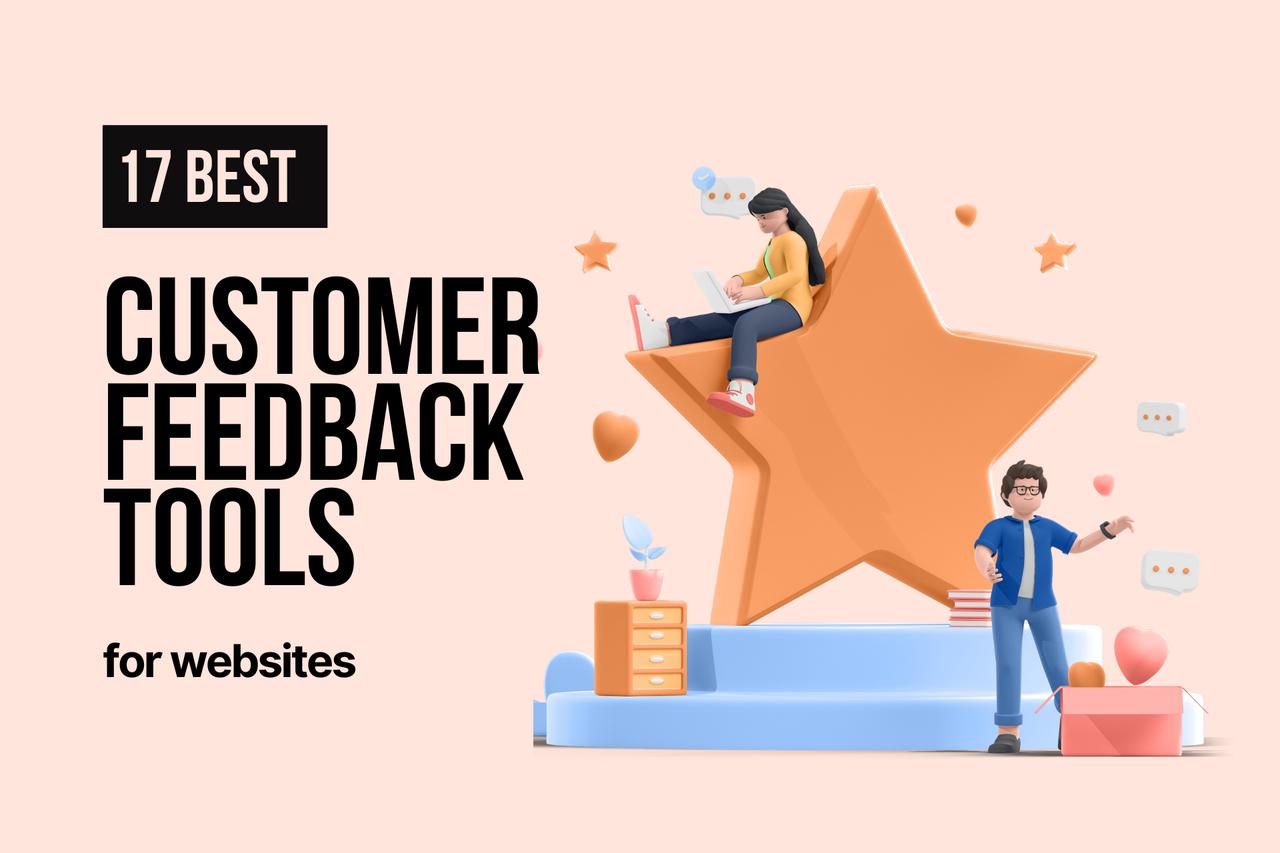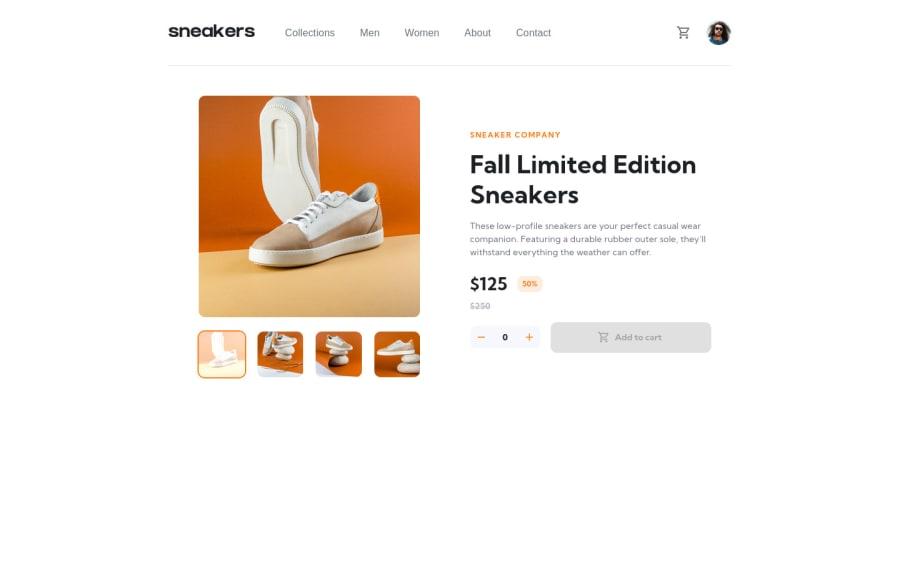
In the bustling world of online shopping, your product page is more than just a digital display—it’s your storefront, your sales pitch, and often, the first impression customers will have of your brand. With countless options available at the click of a button, capturing and holding a shopper’s attention has never been more crucial. So, how do you create a product page that not only attracts visitors but also compels them to hit that “Add to Cart” button?
In this article, we’ll dive into 17 e-commerce product pages that have mastered the art of selling. These examples showcase a variety of styles and strategies that can inspire your own online store. Plus, we’ll share five top tips to enhance your product pages and boost your sales. Whether you’re a seasoned e-commerce entrepreneur or just starting out, these insights will help you turn casual browsers into loyal customers. Let’s transform your product pages into powerful selling tools!
– Discover the Secrets Behind High-Converting E-commerce Product Pages
Creating a high-converting e-commerce product page is both an art and a science. The best product pages combine compelling visuals with persuasive copy to capture attention and drive sales. To help you unlock the secrets behind the most effective product pages, let’s dive into some essential elements you should consider when designing yours.
First and foremost, high-quality images are non-negotiable. Customers need to see what they are buying, and clear, professional images allow them to do just that. Consider using multiple angles, zoomed-in shots for details, and even lifestyle images that illustrate the product in use. These visuals not only enhance the shopping experience but also build trust with potential buyers.
Next, the product description is your opportunity to sell. A great description should do more than just list features; it should tell a story that resonates with the customer. Highlight the benefits and how the product solves a problem or enhances their life. Use bullet points for easy readability, and don’t forget to incorporate keywords that improve SEO without sounding forced.
Social proof is another critical component. Incorporating customer reviews and ratings can significantly influence purchasing decisions. Consumers trust the opinions of others, so showcasing positive feedback can create a sense of community and reliability. Consider adding a section for user-generated content, like photos from satisfied customers, to further enhance authenticity.
| Element | Purpose |
|---|---|
| High-Quality Images | Showcase product details and build trust |
| Compelling Descriptions | Highlight benefits and encourage sales |
| Social Proof | Enhance credibility with reviews |
| Clear CTAs | Guide users towards purchasing |
Furthermore, implementing clear call-to-action (CTA) buttons is crucial. These should stand out and guide users through the conversion process, whether it’s “Add to Cart,” “Buy Now,” or “Learn More.” The CTA should be strategically placed, preferably near the product image and description, ensuring that it’s easily accessible as shoppers scroll down your page.
Lastly, the overall layout and design of your product page play a vital role in user experience. A clean, organized structure with ample white space can help prevent overwhelm and keep the focus on your product. Ensure that navigation is intuitive, making it easy for customers to find related products or additional information without feeling lost.
– Why First Impressions Matter in E-commerce
In the fast-paced world of e-commerce, first impressions can make or break a sale. Customers browsing online have limited attention spans and are often bombarded with choices. This means that your product page must not only capture their interest but also instill confidence in your brand. A compelling first impression can lead to higher conversions, while a lackluster one can result in cart abandonment and lost opportunities.
When a visitor lands on your product page, they should be greeted by a visually appealing layout that showcases your product in the best light. High-quality images, engaging videos, and an intuitive design are essential components that create an instant connection. Consider the following elements that can enhance your product page’s first impression:
- High-Quality Images: Ensure your product images are clear, well-lit, and presented from multiple angles.
- Compelling Copy: Use persuasive language that highlights the benefits and unique features of your product.
- User-Friendly Layout: Organize information logically, making it easy for customers to find what they need.
- Trust Signals: Incorporate customer reviews, ratings, and security badges to build credibility.
Moreover, the speed of your website plays a crucial role in making that vital first impression. Visitors expect pages to load quickly—ideally within three seconds. A delay can frustrate potential buyers, leading them to exit your site in favor of faster alternatives. Optimize your images and consider employing a content delivery network (CDN) to improve load times.
Another key factor is mobile responsiveness. With an increasing number of consumers shopping on their smartphones, your product page must look and function seamlessly across all devices. A mobile-friendly design ensures that users have a pleasant experience, encouraging them to explore your offerings further.
Additionally, personalization can elevate the shopping experience and strengthen first impressions. By leveraging customer data, you can tailor product recommendations and promotions that resonate with individual visitors. This not only captures their attention but also makes them feel valued, increasing the likelihood of conversion.
remember that first impressions extend beyond the visual elements. The tone of your communication—whether it’s in the form of product descriptions or customer service chats—should align with your brand identity. A consistent and engaging voice can help foster a connection with your audience, making them more inclined to trust your brand and ultimately complete a purchase.
| Element | Impact on First Impressions |
|---|---|
| Image Quality | High-quality images build trust and interest. |
| Page Load Speed | Fast-loading pages reduce bounce rates. |
| Mobile Responsiveness | Ensures accessibility for all users. |
| Content Personalization | Enhances customer engagement and satisfaction. |
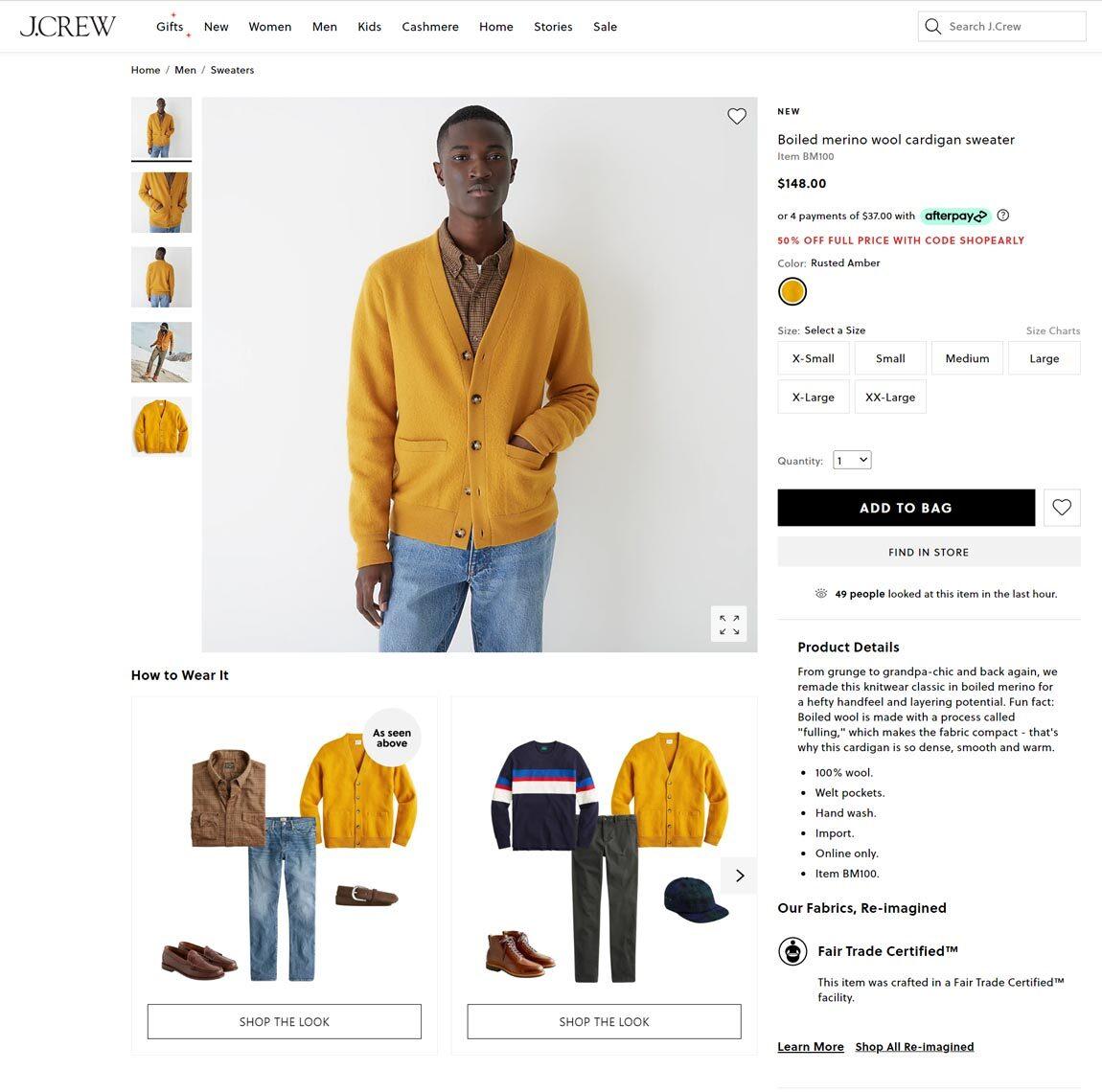
– Essential Elements of a Product Page That Captivates Customers
Creating a product page that truly captivates customers requires a blend of strategic design, engaging content, and user-friendly elements. Here are some essential components that can elevate your product page from ordinary to extraordinary:
- High-Quality Images: Stunning visuals are a must. Use multiple angles, zoom capabilities, and lifestyle images to showcase your product in action. Customers want to see exactly what they are buying.
- Compelling Product Descriptions: Go beyond basic features. Tell a story about the product, emphasizing benefits and uses that resonate with your target audience. Make it relatable!
- Clear Call-to-Action (CTA): Ensure that your CTAs are prominent and persuasive. Phrases like “Add to Cart” or “Buy Now” should stand out, guiding customers smoothly toward making a purchase.
- Customer Reviews and Ratings: Social proof is powerful. Displaying customer testimonials and ratings can significantly influence purchasing decisions, providing reassurance and trust to potential buyers.
- Mobile Responsiveness: With an increasing number of consumers shopping on mobile devices, a responsive design is crucial. Ensure that your product pages look great and function well on all screen sizes.
Another critical aspect is the inclusion of detailed specifications and sizing charts, particularly for clothing and accessories. This helps to reduce returns and increases customer satisfaction. Here’s a simple example of how you might format this information:
| Size | Chest (inches) | Waist (inches) |
|---|---|---|
| Small | 34-36 | 28-30 |
| Medium | 38-40 | 32-34 |
| Large | 42-44 | 36-38 |
Additionally, adding a sense of urgency can encourage customers to act quickly. Features such as limited-time offers or low stock notifications create a fear of missing out (FOMO), prompting quicker decision-making.
Lastly, integrating a seamless checkout experience is essential. Simplify the process as much as possible by minimizing distractions and ensuring that cart updates are clear. A smooth and secure checkout can greatly reduce cart abandonment rates, leading to higher conversion rates.
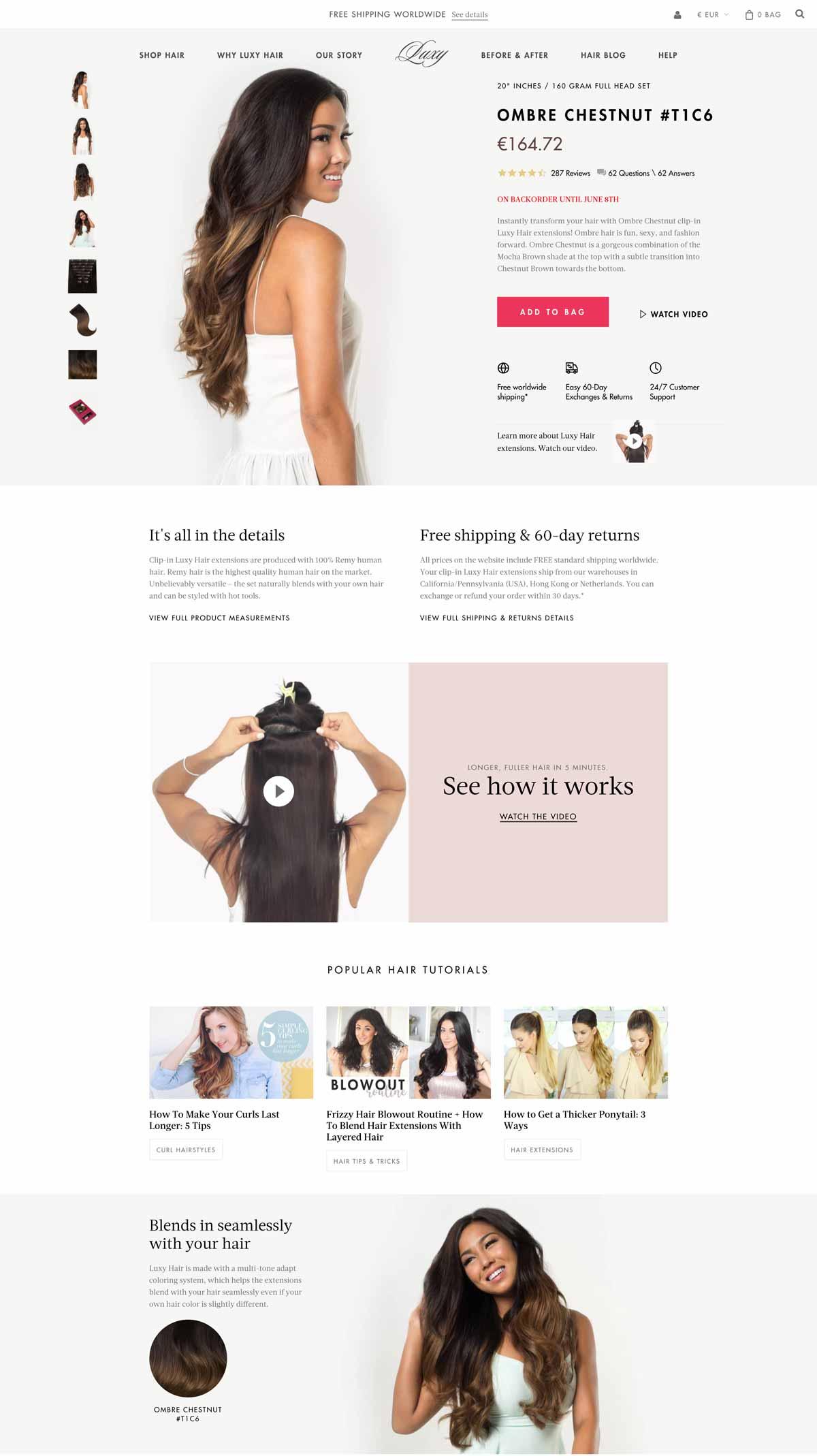
– Real-Life Examples of E-commerce Product Pages That Boost Sales
Real-Life Examples of E-commerce Product Pages That Boost Sales
When it comes to e-commerce, the product page can make or break a sale. Let’s take a look at some standout examples that have nailed their product pages, driving conversions and enhancing customer experience.
1. Apple
Apple’s product pages are a masterclass in minimalism and functionality. Each product features:
- High-quality images: Customers can view products from multiple angles.
- Detailed specs: Technical specifications are clearly laid out.
- Customer reviews: Real user feedback adds authenticity.
With their sleek design, Apple ensures that the user experience is as seamless as their products.
2. Amazon
Amazon’s product pages excel in providing information. They utilize:
- Comprehensive descriptions: Detailed product information that helps customers make informed decisions.
- Buy box: An easy-to-spot ‘Add to Cart’ button.
- Comparison features: Users can compare similar products easily.
This abundance of information often leads to higher conversion rates, as it builds customer trust.
3. Warby Parker
Warby Parker’s product pages focus on eye-wear with an emphasis on:
- Virtual try-on: Customers can see how frames look on their faces.
- Style guides: Suggestions on how to pair different styles.
- Engaging storytelling: Each product has a backstory, enhancing emotional connection.
This interactive approach not only boosts confidence in purchasing but also creates a fun shopping experience.
4. Glossier
Glossier uses its product pages to create a community vibe with:
- User-generated content: Featuring real customers using their products in everyday life.
- Simple navigation: Easy access to related products.
- Social proof: Highlighting popular products and reviews prominently.
This sense of community encourages shoppers to feel like they are part of something bigger, driving sales.
5. Nike
Nike’s product pages showcase the brand’s commitment to performance by using:
- Dynamic visuals: Action shots that resonate with athletes.
- Performance features: In-depth descriptions of how each product enhances athletic performance.
- Customization options: The ability for users to design their own shoes.
By focusing on function and lifestyle, Nike effectively boosts both interest and sales.
Comparison Table of Key Features
| Brand | Key Feature | User Engagement |
|---|---|---|
| Apple | High-quality images | Seamless experience |
| Amazon | Comprehensive descriptions | Customer trust |
| Warby Parker | Virtual try-on | Interactive shopping |
| Glossier | User-generated content | Community feel |
| Nike | Dynamic visuals | Performance focus |
These examples show the power of a well-optimized product page. By incorporating elements that enhance user experience, brands are not only able to showcase their products effectively but also build a loyal customer base. Consider these strategies in your own e-commerce platform to see a boost in conversions!
– The Power of High-Quality Images and Videos on Product Pages
When it comes to e-commerce, the visual experience is paramount. High-quality images and videos can elevate product pages, turning casual browsers into eager buyers. They serve as a digital handshake, establishing trust and creating an emotional connection with potential customers.
Why Does Quality Matter? The clarity and professionalism of your visuals can significantly affect how your brand is perceived. High-resolution images offer potential buyers a detailed view of the product, enabling them to evaluate quality and features effectively. In fact, research shows that products with high-quality images can increase conversion rates dramatically. Here’s why:
- Enhanced Product Understanding: Images capture intricate details that descriptions often miss. A close-up can highlight fabric texture, while a video can demonstrate functionality.
- Reduced Returns: When customers can see exactly what they’re buying, they’re less likely to experience buyer’s remorse, leading to fewer returns.
- Emotional Engagement: Compelling visuals tell a story, allowing customers to envision the product in their lives, thereby fostering a deeper emotional connection.
Incorporating videos can take this experience a step further. Think of videos as dynamic images; they showcase the product in action, provide tutorials, or even share customer testimonials. This multifaceted approach allows for greater engagement and can significantly improve the likelihood of a purchase.
Best Practices for Visual Content: To maximize the impact of your images and videos, consider the following strategies:
- Use Professional Photography: Investing in a professional photographer can yield imagery that reflects the quality of your products.
- Consistency is Key: Maintain a cohesive look across all images and videos to reinforce brand identity.
- Optimize for Speed: Ensure that images and videos are optimized for fast loading without sacrificing quality to enhance user experience.
A Look at Effective Visuals: Here’s a quick comparison of visual elements that can enhance your product pages:
| Visual Element | Benefits |
|---|---|
| High-Resolution Images | Showcases product details and quality |
| 360-Degree Views | Provides a comprehensive look at the product |
| Instructional Videos | Demonstrates usage and features, reducing uncertainty |
| Testimonial Videos | Builds trust through social proof |
Ultimately, investing in high-quality images and videos is not just about aesthetics; it’s about creating an immersive shopping experience that resonates with customers. When done right, these visual elements can be the difference between a lost sale and a loyal customer.

– Crafting Descriptions That Speak to Your Target Audience
When it comes to e-commerce, the power of well-crafted descriptions cannot be understated. Your product descriptions are essentially your sales pitches, and they need to resonate with your potential customers. A good description does more than just inform; it builds a connection with your audience and addresses their needs and desires.
To effectively speak to your target market, start by understanding their pain points. What problems are they facing that your product can solve? Use language that reflects their concerns and aspirations. For instance, instead of saying “This blender has 10 speeds,” try “With 10 precision speeds, this blender allows you to create smoothies just the way you like them—smooth, chunky, or somewhere in between.”
Another strategy is to paint a vivid picture in your customer’s mind. Use descriptive language that evokes sensory experiences. Instead of simply listing features, illustrate how your product fits into their lives. Consider phrases like “Imagine waking up to the rich aroma of freshly brewed coffee, thanks to our state-of-the-art coffee maker.” This approach not only describes the product but also makes customers envision their lives enhanced by it.
| Feature | Benefit |
|---|---|
| 10-speed settings | Customizable blending for your personal taste. |
| Stainless steel blades | Durability and efficiency for a smoother blend. |
| Compact design | Saves counter space and fits in small kitchens. |
Incorporate storytelling into your descriptions. Share a brief anecdote or scenario that highlights your product in action. This not only captivates your audience but also helps them relate personally to your offering. For example, “After a long day at work, Sarah loves to unwind with a relaxing bath, enhanced by our luxurious bath bombs that transform ordinary moments into extraordinary experiences.”
Don’t forget to use social proof to bolster your descriptions. If you have customer testimonials or reviews, weave them into your narrative. For instance, “Join thousands of satisfied customers who have turned to our eco-friendly cleaning products for a healthier home.” This strategy not only builds trust but also encourages potential buyers to visualize themselves among those satisfied customers.
Lastly, ensure that your descriptions are SEO-friendly without compromising on quality. Use relevant keywords that your target audience might search for, but integrate them naturally into your writing. This will not only help your product pages rank better in search engines but also make them appealing to human readers. Balancing SEO needs with engaging content is crucial for driving traffic and conversions.

– Leveraging Customer Reviews and Testimonials for Trust
Utilizing customer reviews and testimonials can significantly enhance the effectiveness of your e-commerce product pages. These elements serve as powerful social proof, helping to build trust between potential buyers and your brand. When customers see that others have had positive experiences with your products, they are more likely to make a purchase.
Here are a few strategies to integrate reviews effectively:
- Highlight Positive Feedback: Choose standout reviews that emphasize key benefits of your products. These could relate to quality, functionality, or customer service experiences. Displaying these prominently can capture attention and instill confidence.
- Feature User-Generated Content: Encourage customers to share photos or videos of your products in use. Visual content makes the testimonials more relatable and authentic, and it gives potential buyers a clearer idea of what to expect.
- Diverse Perspectives: Showcase a variety of testimonials to reflect the diverse customer base you cater to. This inclusivity helps potential buyers see themselves in the experiences shared by others.
- Address Concerns: Don’t shy away from displaying less favorable reviews. Instead, respond to them thoughtfully. This demonstrates transparency and a commitment to customer satisfaction, which can build trust.
To further enhance the presentation of reviews on your product pages, consider implementing a simple rating system. For example, a star rating can provide quick visual feedback about the overall customer satisfaction with a product. Here’s a basic table to illustrate how you might present this information:
| Product | Average Rating | Number of Reviews |
|---|---|---|
| Wireless Earbuds | ★★★★☆ | 250 |
| Smartwatch | ★★★★★ | 180 |
| Yoga Mat | ★★★☆☆ | 90 |
Incorporating a section dedicated to customer testimonials on your product pages not only enhances credibility but also fosters a sense of community among your customers. Consider adding a “Customer Spotlight” feature where you regularly showcase a customer’s story or experience with your product. This not only highlights user satisfaction but creates an emotional connection and encourages more customers to engage.
Lastly, remember to follow up with customers after their purchase to encourage them to leave reviews. This can be done through automated emails or incentives like discounts on future purchases. The more reviews you gather, the more robust your social proof becomes, ultimately contributing to increased sales and customer loyalty.

– Creating a Seamless User Experience for Enhanced Navigation
Creating an intuitive navigation experience is vital for e-commerce product pages. When users can find what they’re looking for without frustration, they are more likely to convert into paying customers. Here are a few key strategies that can elevate the user experience and smooth the navigation process.
- Clear Categorization: Ensure that products are organized into logical categories. This helps users quickly locate items. Think about the various ways customers might search for products and organize accordingly.
- Effective Search Functionality: Implement an easy-to-use search bar that auto-suggests products as users type. This feature can significantly reduce the time customers spend searching, leading to faster conversions.
- Breadcrumb Navigation: Use breadcrumb trails to help users understand their location within your site. This not only improves navigation but also enhances the overall user experience by providing context.
- Consistent Layout: Maintain a uniform layout across product pages. Familiarity breeds comfort; if users know where to find information, they are more likely to make a purchase.
Let’s take a closer look at how these elements can be implemented effectively:
| Feature | Benefit |
|---|---|
| Responsive Design | Ensures navigation is easy on any device, increasing accessibility. |
| Visual Hierarchy | Guides users to key information, helping them make decisions swiftly. |
| Fast Load Times | Reduces bounce rates, keeping potential customers engaged. |
| High-Quality Images | Enhances product appeal, encouraging users to explore further. |
Moreover, integrating user reviews can also enhance trust and navigation. When customers see real feedback from other users, they feel more confident in their purchasing decisions. It’s important to highlight these reviews prominently on product pages.
don’t underestimate the power of streamlined checkout processes. If navigation leads customers to a complicated checkout, all previous efforts may be in vain. Simplifying the checkout experience—by minimizing form fields and offering guest checkout options—can significantly decrease cart abandonment rates.
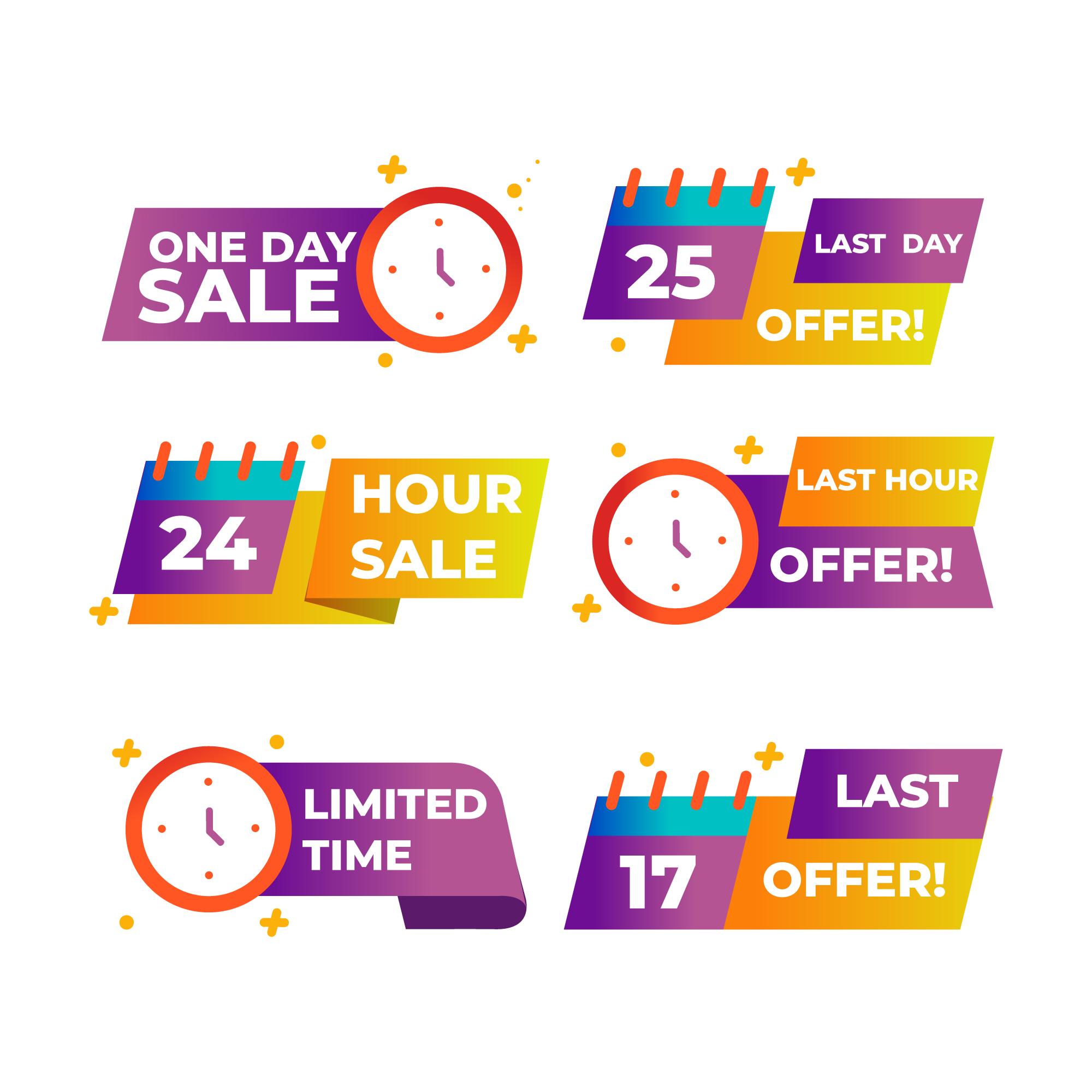
– How to Use Scarcity and Urgency to Drive Sales
Scarcity and urgency are powerful psychological triggers that can significantly enhance your sales strategy. By creating a sense of limited availability, you can prompt customers to make quicker purchasing decisions. Here’s how to effectively leverage these tactics on your e-commerce product pages.
1. Highlight Limited Stock
One of the simplest ways to introduce scarcity is by displaying how many items are left in stock. For instance, if only a few units remain, you might include a message like:
- “Only 3 left in stock!”
- “Hurry, only a few available!”
This approach not only informs the customer but also creates a fear of missing out (FOMO), nudging them toward immediate action.
2. Time-Sensitive Offers
Incorporating countdown timers on your product pages can effectively instill urgency. A visual representation of time running out can motivate potential buyers to act before the offer expires. Consider using phrases like:
- “Sale ends in 2 hours!”
- “Limited time offer!”
You can implement a countdown timer that updates in real-time to enhance the urgency further.
3. Use Language that Encourages Action
The words you choose play a crucial role in conveying urgency. Using action-oriented language can spur customers to finalize their purchases. Consider phrases such as:
- “Grab yours before it’s gone!”
- “Get it now or regret it later!”
These types of calls-to-action can make a significant difference in conversion rates.
4. Showcase Popularity
Displaying that an item is frequently bought can also create a sense of scarcity and urgency. You can include messages like:
- “This item has been sold 100 times today!”
- “Top seller!”
By indicating that others are buying the product, you can spur potential customers to act quickly so they don’t miss out.
5. Offer Exclusive Deals
Creating exclusive promotions can further enhance the sense of urgency. For example:
- “First 50 buyers get an extra 20% off!”
- “This week only: Buy one, get one 50% off!”
This not only makes the offer more attractive but also encourages quicker decision-making among shoppers.
By strategically incorporating these elements into your e-commerce product pages, you can effectively drive sales and create a dynamic shopping experience that promotes urgency and scarcity. The key is to balance these tactics with genuine value, ensuring that your customers feel confident and satisfied with their purchases.
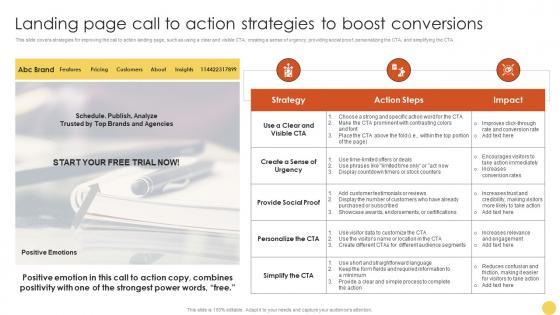
– Strategies for Effective Call-to-Actions That Convert
When it comes to driving conversions on your e-commerce product pages, an effective call-to-action (CTA) can make all the difference. Crafting CTAs that resonate with your audience requires a blend of psychology, design, and strategic placement. Here are some actionable strategies to help your CTAs shine.
1. Use Action-Oriented Language
Your CTAs should inspire action. Use strong, compelling verbs that encourage users to take the next step. Phrases like “Shop Now,” “Get Yours Today,” or “Claim Your Discount!” create a sense of urgency and excitement. Avoid vague language and be explicit about what the visitor will gain by clicking.
2. Create a Sense of Urgency
Scarcity and urgency can significantly boost conversion rates. Incorporate time-sensitive offers or limited stock warnings into your CTAs. For example:
- “Only 2 Left in Stock!”
- “Sale Ends Midnight!”
- “Limited Time Offer!”
These phrases prompt immediate action and make potential customers feel they might miss out if they hesitate.
3. Design for Visibility
The design of your CTA button should stand out on the page. Use contrasting colors that draw the eye and make sure the button size is appropriate. A/B testing different designs can help you identify which styles perform best. Remember to consider the following:
- Contrast: Ensure the button color contrasts well with the background.
- Size: Make the button large enough to be noticeable but not so large that it overwhelms the content.
- Shape: Rounded corners tend to be more inviting than sharp edges.
4. Leverage Social Proof
Incorporating elements of social proof can enhance the effectiveness of your CTAs. Display testimonials, trust badges, or the number of satisfied customers alongside your CTA. This creates a sense of community and trust. For example:
| Testimonial | Customer |
|---|---|
| “Love this product! It’s a game changer!” | – Sarah J. |
| “Best purchase I’ve made this year!” | - Mike T. |
Displaying such testimonials near your CTA can significantly boost confidence and lead to higher conversion rates.
5. Optimize for Mobile
With an increasing number of shoppers using mobile devices, it’s crucial to ensure your CTAs are optimized for smaller screens. Ensure that buttons are easily clickable, and the text is readable without zooming. Make mobile users feel just as valued as desktop users by providing a seamless experience.
By implementing these strategies, you can create compelling CTAs that not only capture attention but also encourage action, ultimately leading to higher conversion rates on your product pages. Remember, a well-placed and effectively crafted CTA is your best friend in the e-commerce world!
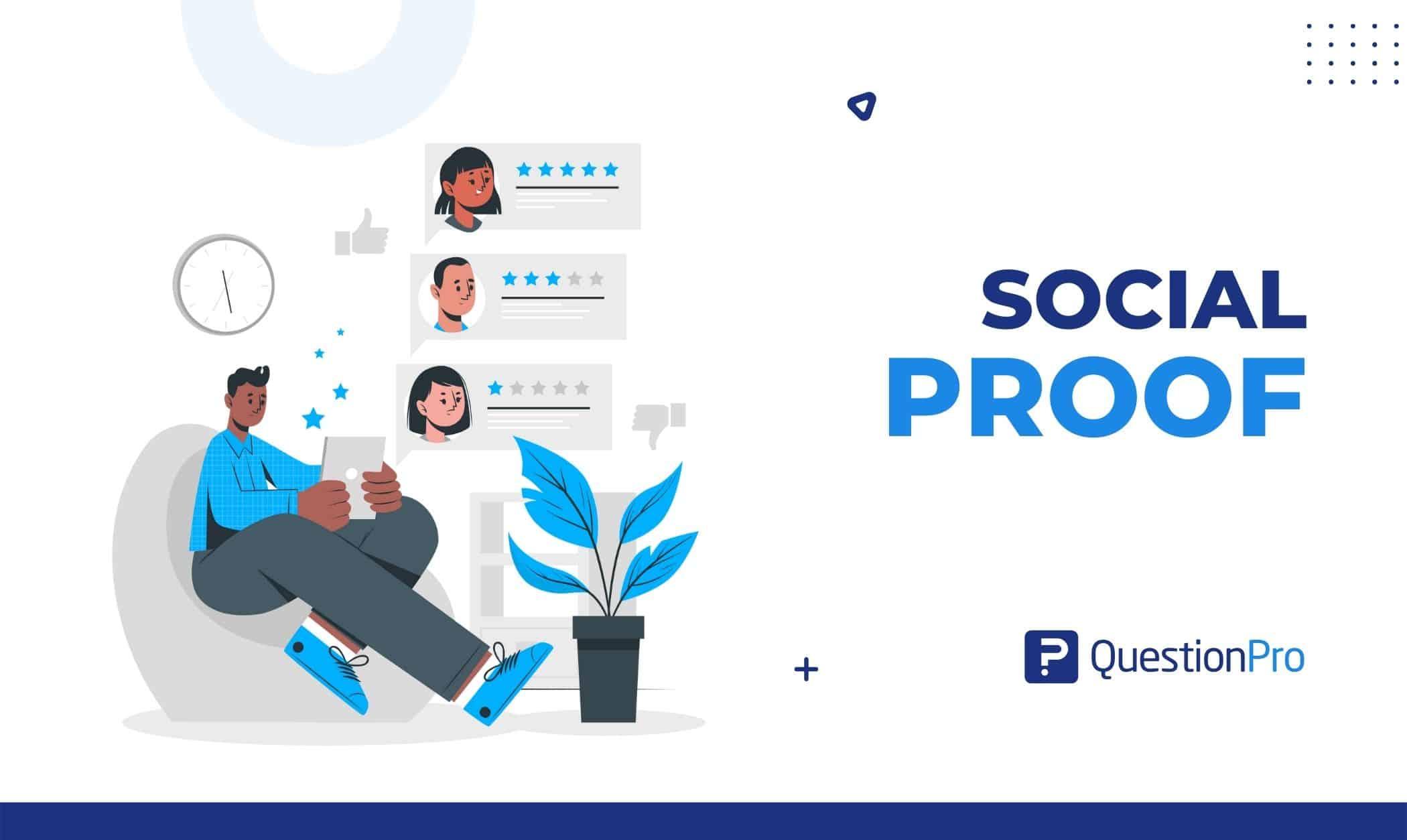
- Enhancing Your Product Page with Social Proof
In the fast-paced world of e-commerce, capturing the attention of potential customers is crucial, and nothing does this quite like social proof. By showcasing how others have benefited from your products, you create a sense of trust and credibility. Here are some effective ways to enhance your product page with social proof:
- Customer Reviews: Displaying authentic customer reviews can significantly influence purchasing decisions. Highlighting positive feedback and real-life experiences helps build trust. Consider featuring a star rating system that allows visitors to quickly gauge overall satisfaction.
- Testimonials: Go beyond simple reviews and include detailed testimonials from satisfied customers. Use their words to convey emotional connections and the specific benefits they gained from your products. Make these testimonials visually appealing with accompanying images of the customers (with their permission) to add a personal touch.
- User-Generated Content: Harness the power of social media by encouraging customers to share photos of themselves using your products. This not only provides authentic content but also fosters community engagement. Create a gallery on your product page to showcase this user-generated content.
- Expert Endorsements: If your product has received any endorsements from industry experts or influencers, make sure to highlight these. Displaying seals of approval from trusted figures can significantly enhance your product’s credibility.
- Sales Numbers: Sharing impressive sales statistics can also serve as social proof. For instance, a statement like “Over 10,000 happy customers” can create a sense of urgency and encourage potential buyers to join the ranks of satisfied customers.
To further enhance the effectiveness of social proof on your product page, consider the following layout suggestions:
| Element | Benefits |
|---|---|
| Customer Reviews | Builds trust and provides insights |
| Testimonials | Creates emotional connections |
| User-Generated Content | Boosts engagement and authenticity |
| Expert Endorsements | Increases credibility and authority |
| Sales Numbers | Encourages urgency and social validation |
Lastly, remember that the presentation matters. Ensure that social proof elements are prominently displayed and easy to navigate. Use eye-catching designs and clear calls-to-action to guide visitors toward making a purchase. By effectively incorporating social proof into your product pages, you not only enhance the user experience but also significantly increase your chances of converting visitors into loyal customers.
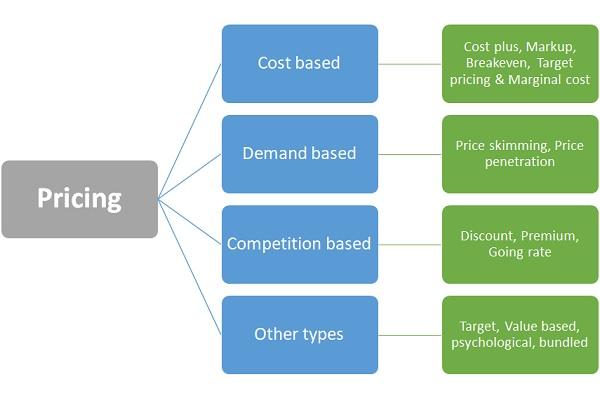
- The Role of Pricing Strategies in E-commerce Success
When it comes to e-commerce, defining the right pricing strategy isn’t just about numbers; it’s an essential part of your overall marketing strategy. The way you price your products can significantly influence customer perceptions, purchase decisions, and ultimately, your bottom line. Let’s explore some key strategies that can elevate your e-commerce game.
Value-Based Pricing is one of the most effective strategies. By focusing on the perceived value of your product rather than simply its cost, you can often charge a premium. Customers are more likely to pay for a product they believe has significant value. Highlighting unique features, benefits, and customer testimonials can help you communicate this value effectively.
Psychological Pricing is another powerful tool in your pricing arsenal. This tactic involves setting prices that have psychological significance. For instance, pricing an item at $29.99 instead of $30.00 makes it seem more affordable. Techniques like using odd prices or placing emphasis on discounts can create a greater sense of urgency or encourage impulse buying.
Implementing Dynamic Pricing can also be a game-changer. This strategy involves adjusting prices in real-time based on market demand, competition, or other external factors. E-commerce platforms can leverage algorithms to analyze customer behavior and adjust prices accordingly, ensuring maximum competitiveness and profitability.
Another important aspect is the use of Promotional Pricing. Limited-time offers, discounts, and seasonal sales can attract buyers looking for a good deal. Creating a sense of urgency can encourage customers to take action quickly, driving conversions. Just remember to clearly communicate the time-limited nature of these offers to enhance their effectiveness.
| Pricing Strategy | Benefits | Considerations |
|---|---|---|
| Value-Based Pricing | Maximizes profit by charging based on perceived value. | Requires strong branding and customer education. |
| Psychological Pricing | Increases sales through perception manipulation. | Must be used carefully to avoid undermining value. |
| Dynamic Pricing | Optimizes prices based on real-time data. | Can alienate customers if not transparent. |
| Promotional Pricing | Encourages quick buying decisions. | Overuse can devalue products. |
Lastly, consider the role of Bundle Pricing. By offering products as a package, you can provide customers with perceived savings while increasing your average order value. This strategy not only enhances customer satisfaction but also encourages them to explore more of what you offer.
Ultimately, your pricing strategy should align with your brand identity and customer expectations. Test different approaches, analyze what works best for your audience, and remember that the right strategy can transform a casual visitor into a loyal customer. Embrace the power of pricing, and watch your e-commerce success soar!
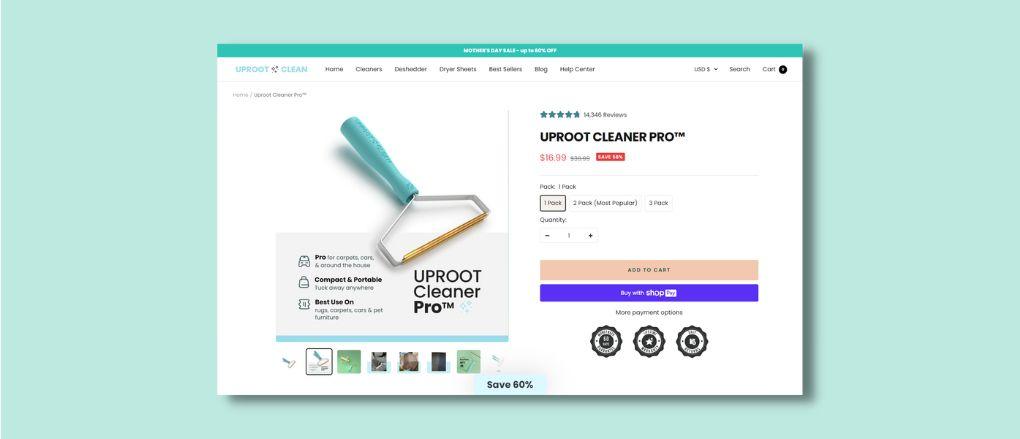
- Final Thoughts: Key Takeaways for Building Your Own Winning Product Page
Creating a product page that not only attracts visitors but also converts them into buyers is both an art and a science. To master this craft, it’s essential to focus on a few crucial elements that can significantly impact your sales. Here are the key takeaways you should consider when building your own winning product page:
- Visual Appeal: A picture is worth a thousand words. High-quality images that showcase your product from multiple angles can captivate potential buyers. Consider using a zoom feature or 360-degree views to enhance the visual experience.
- Compelling Descriptions: Your product descriptions should not only inform but also engage. Use persuasive language that highlights the benefits and features of the product, creating a narrative that resonates with your audience.
- Social Proof: Integrating customer reviews and testimonials can significantly increase trust. Don’t shy away from showcasing user-generated content, which can illustrate real-life applications of your products.
- Clear Calls-to-Action: Make it easy for customers to purchase your product by using prominent and compelling calls-to-action (CTAs). Phrases like “Buy Now” or “Add to Cart” should stand out on the page.
- Mobile Optimization: With a growing number of consumers shopping on mobile devices, ensure your product page is responsive and performs well on smaller screens. A mobile-friendly design can make a substantial difference in conversion rates.
Understanding user behavior is also essential. Utilize analytics tools to gain insights into how visitors interact with your product page. This data can guide you in making informed adjustments, whether it’s rearranging elements for better visibility or tweaking your copy for clarity.
| Element | Impact on Conversion |
|---|---|
| High-Quality Images | Increases engagement and trust |
| Persuasive Copy | Enhances buyer motivation |
| Customer Reviews | Builds credibility and social proof |
| Clear CTAs | Simplifies the buying process |
| Mobile Optimization | Expands potential market reach |
Don’t forget about the importance of testing. Conduct A/B tests to determine what resonates most with your audience. Experiment with different layouts, colors, and wording to find the winning combination that maximizes your conversion rates.
Lastly, keep your product page updated. As trends shift and customer preferences evolve, regularly revisiting and refining your product page will ensure it remains relevant and effective. A dynamic page keeps your audience engaged and encourages repeat visits.
Frequently Asked Questions (FAQ)
Q&A: 17 E-commerce Product Pages That Sell (Examples + 5 Top Tips)
Q1: What makes a product page effective for e-commerce?
A1: Great question! An effective product page captures attention, provides essential information, and ultimately encourages customers to make a purchase. It should include high-quality images, compelling descriptions, clear calls to action, and trust signals like reviews and ratings. Think of it as your online salesperson—designed to engage visitors and make them feel confident in their buying decision!
Q2: Can you share some examples of successful product pages?
A2: Absolutely! There are plenty of standout examples out there. For instance, companies like Apple and Amazon excel with their clean layouts and user-friendly navigation. They utilize large, high-resolution images, highlight product features, and include customer reviews prominently. By studying these successful pages, you can glean valuable insights into what resonates with shoppers.
Q3: What are some common mistakes to avoid on product pages?
A3: Ah, the pitfalls! One major mistake is overcrowding the page with too much text or cluttered images. This can overwhelm potential buyers. Another is neglecting mobile optimization—many shoppers browse on their phones, so your page must look good and function well on all devices. Lastly, don’t forget to include clear pricing and shipping information upfront; confusion here can lead to abandoned carts.
Q4: What are the top tips for creating a high-converting product page?
A4: Here are five top tips to elevate your product pages:
- Use High-Quality Images: Invest in professional photography. Show your product from various angles and in use to boost engagement.
- Craft Compelling Product Descriptions: Focus on benefits over features. Tell a story that connects emotionally with your audience.
- Incorporate User-Generated Content: Showcase real customers using your product through reviews and social media posts. This builds trust!
- Ensure Easy Navigation: Keep it simple! Utilize clear categories, filters, and a search bar for a seamless shopping experience.
- Optimize for SEO: Use relevant keywords in your descriptions to help your products show up in search results. This drives organic traffic to your site.
Q5: How important are customer reviews on product pages?
A5: Extremely important! Customer reviews act as social proof, helping to establish credibility and trust. They can significantly influence purchasing decisions—many shoppers read reviews before making a buy. Don’t shy away from showcasing both positive and constructive feedback; it shows transparency and can help you improve your products.
Q6: Can I use these tips regardless of my industry?
A6: Definitely! While certain industries may have unique nuances, the fundamental principles of effective product pages apply universally. Whether you’re selling tech gadgets, clothing, or handmade crafts, the goal is the same: connect with your audience and guide them smoothly towards a purchase.
Q7: Where can I find more inspiration for my product pages?
A7: You’re in luck! Websites like Awwwards, Best Product Pages, and even Pinterest can be gold mines for design inspiration. Analyze what works on successful e-commerce platforms and think about how you can adapt those elements to fit your brand’s style.
Q8: What’s the takeaway from this article?
A8: The key takeaway is that a well-optimized product page can significantly boost your sales. By taking inspiration from successful examples and implementing these top tips, you can create engaging, persuasive pages that not only attract visitors but also convert them into loyal customers. So, roll up your sleeves and start revamping those product pages—you’ve got this!
Future Outlook
And there you have it—17 inspiring e-commerce product pages that not only catch the eye but also convert visitors into customers! By studying these examples, you can see that a great product page is more than just a pretty picture; it’s about creating an engaging experience that resonates with your audience.
Remember, it’s all about the details. From compelling product descriptions to eye-catching visuals and customer testimonials, each element plays a crucial role in persuading potential buyers. And don’t forget our top tips! Implementing those strategies can elevate your own product pages and drive sales like never before.
So, are you ready to take your e-commerce game to the next level? Dive in, experiment, and watch as your product pages transform into powerful selling tools. Your customers are waiting—let’s make sure they find exactly what they need and leave with a smile (and their shopping carts full)! Happy selling!



